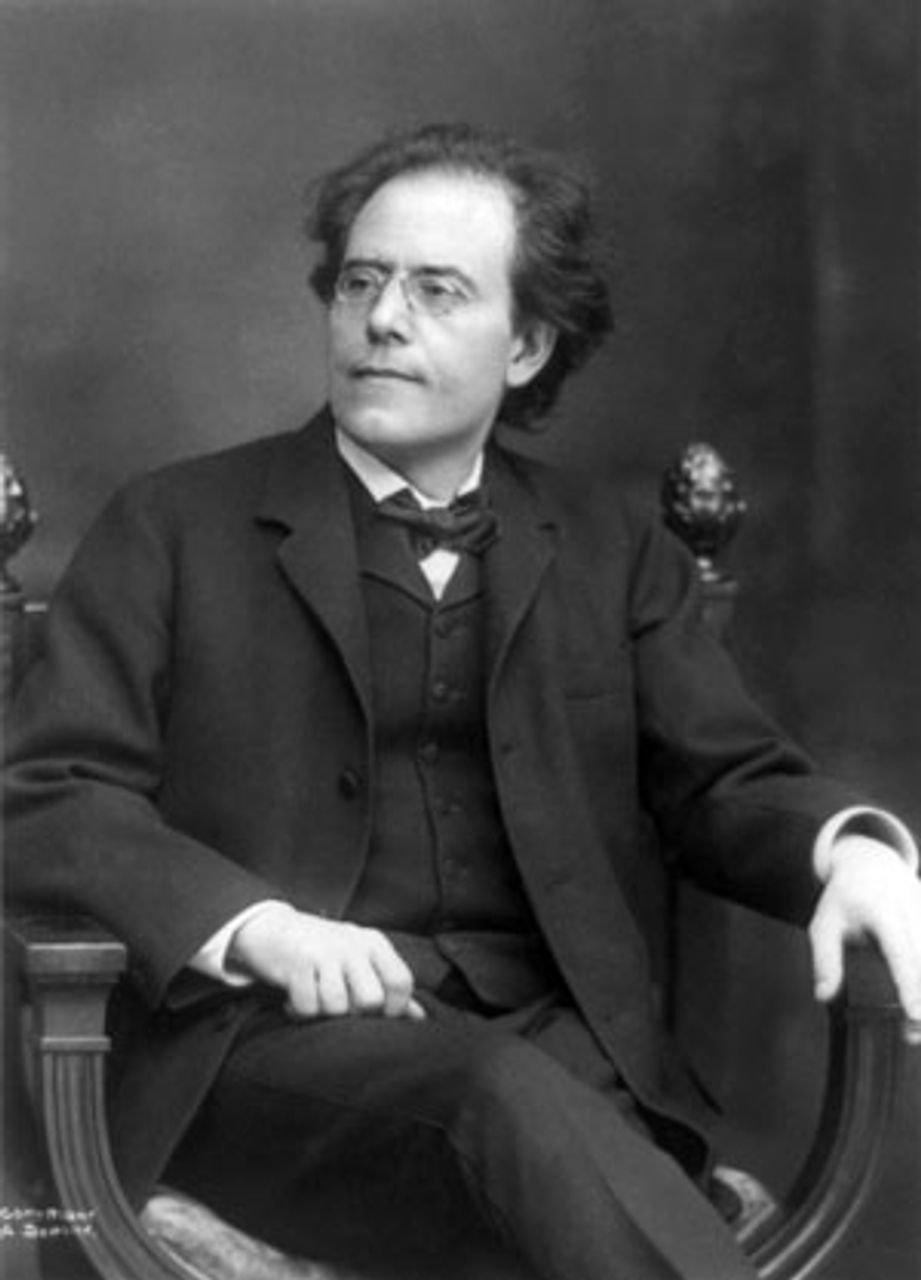 Gustav Mahler in 1909
Gustav Mahler in 1909Composer Gustav Mahler is remembered for his nine symphonies and equally for his famous song cycles, including Das Lied von der Erde (“The Song of the Earth”), Rückert Lieder, Kindertotenlieder (“Songs on the Death of Children”), Des Knaben Wunderhorn (“The Youth’s Magic Horn”) and Lieder eines fahrenden Gesellen (“Songs of a Wayfarer”). He also left behind a draft for a tenth symphony.
Mahler is known today almost entirely for his large-scale compositions, and these works were by and large rejected during his lifetime by a public that regarded him first and foremost as a conductor. Mahler held major conducting posts across Europe—in Prague, Leipzig, Budapest, Hamburg and most notably Vienna, and he also appeared in Berlin, Amsterdam, London and Paris. Toward the end of his life he came to the United States, where he directed both the New York Philharmonic and the Metropolitan Opera.
Mahler’s music was not widely heard in concert halls and on recordings until the middle of the 20th century, about 40 years after his death. Today, however, he is among the most widely listened to of 19th and 20th century classical composers. Last year, which marked the 100th anniversary of Mahler’s death in Vienna on May 18, 1911, witnessed concerts, new recordings, lectures and exhibitions around the world celebrating his life and music.
His work speaks to a very wide audience, while his life and career remain the subject of intense scholarly interest.
Gustav Mahler was born on July 7, 1860 in the village of Kalischt in Bohemia, then part of the Austro-Hungarian Empire, and now known as Kaliste in the Czech Republic. He spent most of his childhood in the nearby city of Iglau, now called Jihlava and located in Moravia, also part of the Czech Republic.
Mahler came from a Jewish family, which significantly limited his prospects in a region in which anti-Semitic discrimination had deep roots. Anti-Semitism, as we shall see, would later confront Mahler in his conducting career.
The young Mahler showed an extraordinary musical ability at a very early age. When he was four, he was discovered plunking out popular melodies on the piano in his grandmother’s attic. At the age of six he was writing short compositions. Training in piano and harmony from local musicians followed. A local newspaper reports a concert in which “the Fantasia on Themes from the opera Norma, for the pianoforte, by Sigmund Thalberg, [was] played by the young virtuoso Mahler, who fully deserves the praise that we have often lavished on him in the past. He played this evening with as much brilliance as on previous occasions, and his performance was rewarded with a veritable ovation.” Mahler was 12 years old at the time.
At the age of 15, the future composer began his studies in Vienna, one of the world’s most prominent cultural centers and the virtual birthplace and capital of classical music from the period beginning with Haydn and Mozart in the late 18th century.
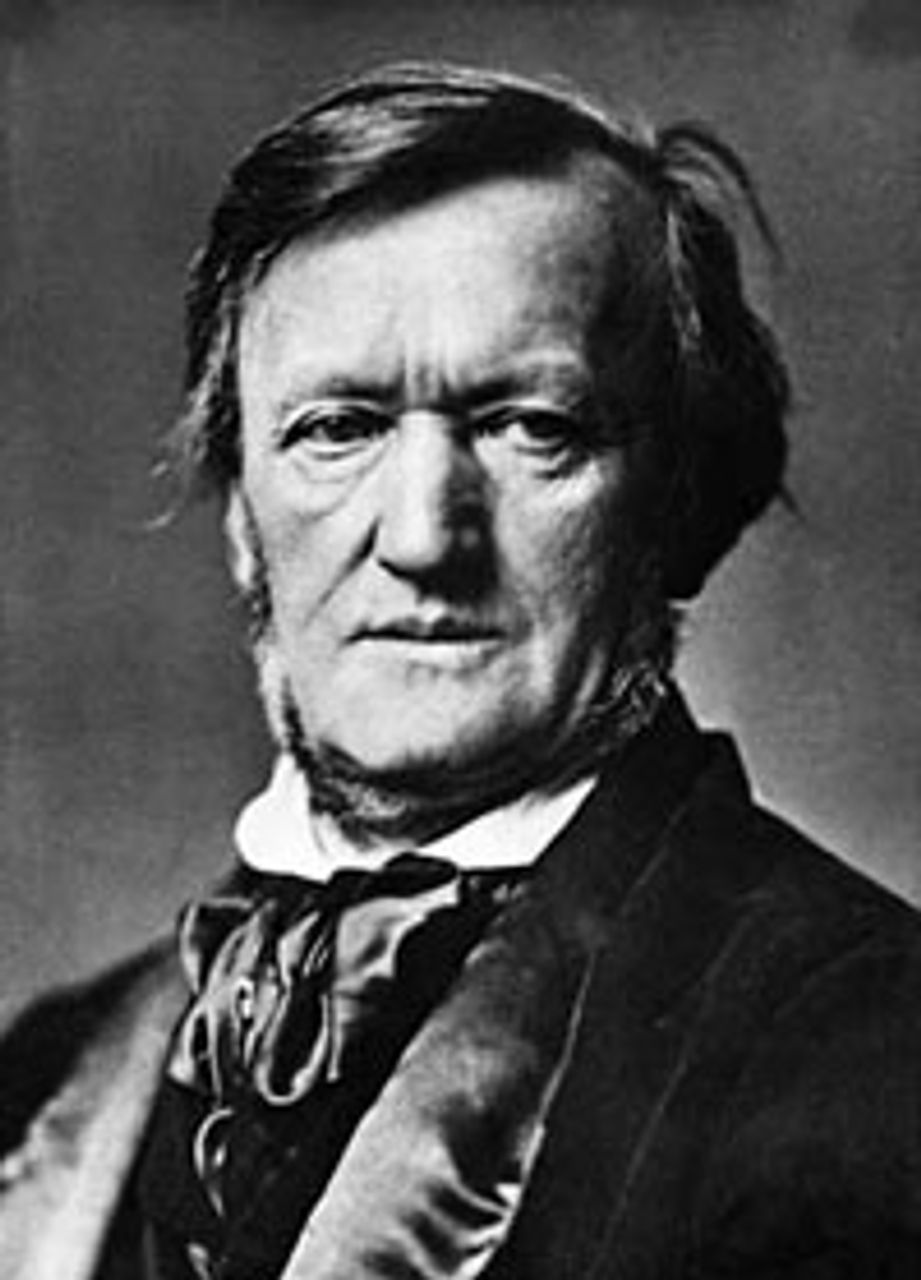 Richard Wagner
Richard WagnerTwo months after Mahler’s arrival, Richard Wagner visited the city in connection with productions of two of his operas, Tannhauser and Lohengrin. Mahler, like many of the other young students at the conservatory, worshiped Wagner. At this time he was also exposed to Beethoven’s late string quartets. He saw Franz Liszt perform Beethoven’s Emperor Concerto. Mahler was also influenced by Anton Bruckner, who was then on the conservatory’s faculty.
Following graduation, Mahler took up a few provincial operatic conducting posts. His gift for conducting was immediately apparent, although he at first considered the work mainly drudgery necessary to sustain him financially while he pursued composition. Nonetheless, having taken up the baton, Mahler showed himself to be a fanatical perfectionist. While he made no friends among singers or administrators, he substantially improved the quality of the programs and productions wherever he conducted.
Higher appointments followed. Between the age of 25 and 30, Mahler went on to conduct in the major cultural centers of Prague, Leipzig and Budapest. Mahler’s time in Budapest, between 1888 and 1891, also saw the beginning of his struggle to find a sympathetic audience for his compositions, a battle that would consume him for the rest of his life.
He had composed his First Symphony in a six-week burst of inspiration in late 1887 and early 1888. Mahler conducted the premiere of an early version of this work in Budapest on November 20, 1889. The response, as was so often to be the case over the next two decades, was generally unfavorable. Mahler expressed his feelings to his friend Natalie Bauer-Lechner:
“Naively, I imagined that it would be child’s play for performers and listeners, and would have such immediate appeal that I should be able to live on the profits and go on composing. How great was my surprise and disappointment when it turned out quite differently! … My friends avoided me afterwards; no one dared to mention the performance or the work to me, and I went about like a leper or an outlaw.”
Despite these difficulties with his career as a composer, Mahler was widely admired as a conductor by the time he was 30 years old. His next conducting post was in Hamburg, where he remained from 1891 to 1897. There he continued to give original readings of Mozart, Wagner and Beethoven, riling many traditionalists, and gaining for himself a dedicated following at the same time. He also put on productions of the latest operas of Verdi and Puccini, and conducted the first German performance of Tchaikovsky’s Eugene Onegin. The composer, who was present, wrote that Mahler was “simply a genius, burning with the desire to conduct.”
In the summer of 1892, Mahler traveled to London to conduct a number of German operas, including Beethoven’s Fidelio as well as Wagner’s Tristan und Isolde and all four operas of Der Ring des Nibelungen. George Bernard Shaw, the playwright also known for his music criticism, wrote of a performance of Wagner’s Siegfried that he attended: “The impression created by the performance was extraordinary, the gallery cheering wildly at the end of each act.” English composer Ralph Vaughn Williams said he could not sleep for two nights after seeing Mahler’s performance of Tristan.
Never content to confine himself to the conducting side of his career, Mahler continued during this period to search for an audience for his compositions. Performances of his continuously revised First Symphony, movements of the Second Symphony and his songs invited hisses, boos and catcalls, intermingled with shouts of approbation. The leading composers and conductors of the day were every bit as divided with respect to this new music as the listening public.
It was during his tenure at Hamburg that Mahler developed a routine, which would continue for the rest of his life, of composing exclusively on his time off during the summer, to allow himself to focus entirely on each new composition and to prevent his composing from interfering with his conducting career. In 1893 he began spending his summers in the Austrian countryside. The following year he had a small hut built for him to compose in. He would set out for the hut each morning, often remaining there until evening. It was there that he composed his colossal Third Symphony, completed in 1896.
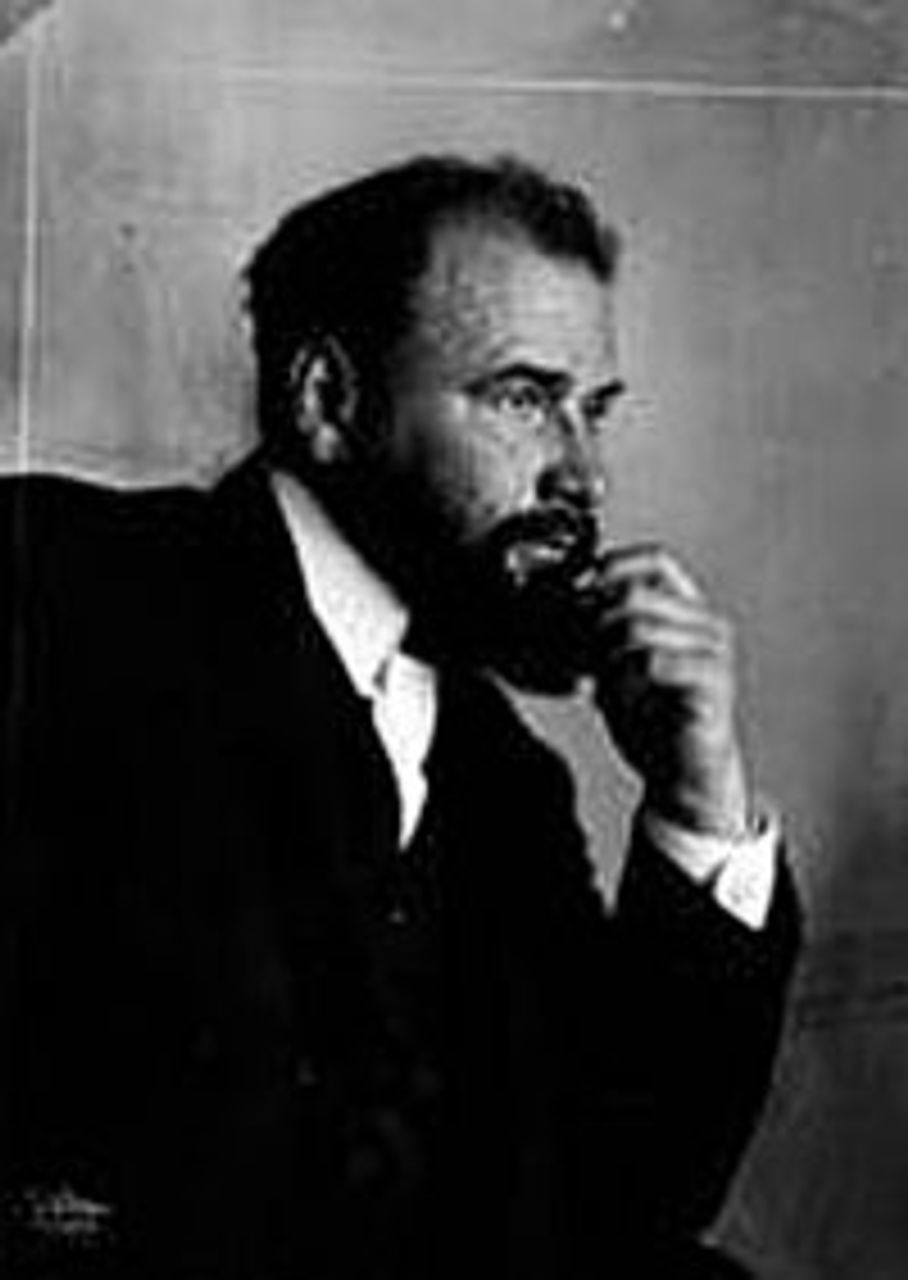 Gustav Klimt
Gustav KlimtMahler moved on from Hamburg in 1897 to begin his work as chief conductor at the Hofoper in Vienna, one of the most prestigious posts in the world. His 10 years in Vienna were the apex of his career as a conductor and also saw the completion of four of his nine symphonies. Mahler became a fixture in the cultural life of a city that Sigmund Freud, Gustav Klimt and Stefan Zweig all called home.
Vienna at the turn of the 20th century was a city of profound contradictions. While home to a vibrant cultural life that witnessed intense ferment in the arts and sciences, it was also the heart of the decaying Austro-Hungarian Empire, in the center of a continent on the brink of war and catastrophe.
Vienna was headquarters of the large and influential Social Democratic Party, a leading section of the Second International. Still nominally a revolutionary party, the Austrian SPD generally followed its more famous German counterpart in gradually abandoning Marxism in favor of parliamentarism and narrow trade union politics, a process that culminated in the Austrian party’s support for its own bourgeoisie at the outbreak of the First World War.
Despite its ultimately fatal political flaws, it is also true that the Austrian party played an enormous role in the political and cultural life of the country and especially of Vienna. Its newspaper, the Arbeiter-Zeitung, enjoyed a mass circulation. Lectures, meetings and mass demonstrations were a constant presence in the city’s life. Mahler, though by no means politically active, voted for the party in a number of elections.
Leon Trotsky summed up the fundamental historical dynamic underlying the contradictions of political and cultural life in fin-de-siècle Europe in his Literature and Revolution, written in the early 1920s: “Capitalist society passed through two decades of unparalleled economic prosperity which destroyed the old concepts of wealth and power, and elaborated new standards, new criteria of the possible and of the impossible, and urged people toward new exploits. At the same time, the social movement lived on officially in the automatism of yesterday. The armed peace, with its patches of diplomacy, the hollow parliamentary systems, the external and internal politics based on the system of safety valves and brakes, all this weighed heavily on poetry at a time when the air, charged with accumulated electricity, gave sign of impending great explosions.”
Trotsky went on to explain that “Futurism was the foreboding of all this in art,” and the same general circumstances shaped the world of music and other areas of cultural life. It is fair to say that the main artistic currents in Vienna reflected this “foreboding,” most notably the Vienna Secession led by Gustav Klimt and including such other artists as Koloman Moser, Oskar Kokoschka, Egon Schiele and Richard Gerstl, and the architects Otto Wagner, Joseph Maria Olbrich and Josef Hoffmann. Mahler was a close friend of some of the figures in the Vienna Secession. His own compositions doubtlessly reflected the “impending great explosions” of which Trotsky wrote, as did those of younger composers Arnold Schoenberg, Anton Webern and Alban Berg, who would go on to found a movement known as the Second Viennese School.
In most respects, Mahler flourished in his decade in Vienna. His position at the Opera was one of near complete authority. He directed the first productions of such major staples of today’s repertory as Eugene Onegin, Offenbach’s The Tales of Hoffmann and Puccini’s La bohème. He put on new and revised productions of many Verdi, Mozart and Wagner operas as well.
At the same time, Mahler’s composing kept pace. Over his summer holidays between 1900 and 1907 Mahler worked on his fourth through eighth symphonies, which were introduced to mixed receptions. He also traveled to Berlin, Paris and Amsterdam to conduct his own compositions, which began to attract a following among a small circle of conductors. Composers Richard Strauss, Schoenberg, Alexander von Zemlinsky, Webern and Berg also supported Mahler.
It was also during his Vienna period that Mahler met and married the young and beautiful Alma Schindler. They met in November 1901 and were engaged to be married roughly a month later. Though Alma herself was a composer of considerable talent, Mahler forbade her to compose. This devastated Alma, but she instead devoted her musical gifts to supporting Mahler’s career, copying out parts and writing transcriptions of his compositions. Nevertheless, Mahler’s domineering manner, on this and other matters, took its toll on their relationship.
Alma was known as a femme fatale. Mahler’s junior by nearly 20 years, she later had an affair with the architect Walter Gropius, founder of the Bauhaus, whom she would marry after Mahler’s death. The affair, towards the end of Mahler’s life, shattered the composer and led him to consult with Freud. The problems of their complicated relationship aside, Alma and Gustav Mahler’s partnership was a profound one that deeply affected the composer’s musical life.
Mahler’s life in Vienna was stormy on other than personal grounds. Anti-Semitism had wide support and was encouraged, as elsewhere, as a means of weakening the workers’ movement. The notorious anti-Semite and leader of the Christian Social Party, Karl Lueger, became mayor of Vienna in 1897.
The composer, who had converted to Catholicism largely to shield himself from official anti-Semitism in his quest for the position of director of the Hofoper, encountered opposition from the anti-Semitic press even before arriving in Vienna. The Reichspost, an anti-Semitic daily, wrote on April 14, 1897: “The Jews’ press will see whether the panegyrics with which they plaster their new idol at present do not become washed away by the rain of reality as soon as Herr Mahler starts his Jew-boy antics at the podium.”
While Mahler clashed with many of the musically conservative elements as he fought to remake the Vienna Opera into what he thought was required, he also faced continuous sniping on religious and political grounds. He was ultimately driven from his post by a venomous press campaign in 1907 that alleged “mismanagement” of the Opera on Mahler’s part.
The next and final stage of Mahler’s career took him to New York, where he led first the Metropolitan Opera and then the New York Philharmonic. He made his debut at the Met on January 1, 1908, and went on to have a successful season. The next year, he took over the conductorship of the recently re-formed New York Philharmonic, but continued to make some guest appearances at the opera. His work in New York also aroused the impatience and hostility of conservative elements, including wealthy patrons of the Philharmonic.
During this period Mahler also continued to return to Austria for the summers, where he composed his final works, Das Lied von der Erde and the Ninth Symphony.
The composer had suffered the tragic loss of one of his daughters to scarlet fever in 1907, and shortly afterwards had himself been diagnosed with a heart ailment, which, though not immediately life-threatening, left him susceptible to complications like the bacterial endocarditis that struck him in the late winter of 1910. Today this condition is treatable, but a century ago it was not. Mahler returned to Europe in April 1911, and died a month later.
Gustav Mahler wrote music of considerable extremes—in length, scope and intensity. Accordingly, his music presents the listener with unique challenges. It demands special attention, owing to the sheer length of some works (his symphonies are, on average, between an hour and ninety minutes long), their ambitious framework and the heights and depths of emotion they traverse. Mahler expressed his own aims when he famously told Jean Sibelius that “A symphony must be like the world. It must embrace everything.” Delving into the musical worlds Mahler discovered is an important and engaging project, well worth the undoubted effort it entails.
Mahler was sometimes accused of disrespect for the musical tradition he inherited, but in fact among his greatest strengths was the zeal of his devotion to the accomplishments of his predecessors. His own compositions were based on the careful study he made of the works of Bach, Beethoven, Mozart and Wagner in particular. He not only paid homage to these composers in his work, he sought to build on the traditions they established.
Mahler made much use of the Sonata and Rondo forms pioneered by Haydn, Mozart and Beethoven and then further explored and expanded by the Romantic composers such as Schumann, Chopin, Berlioz and Brahms. Mahler brought new life to these models through the use of the leitmotif (recurring theme), first elaborated in Berlioz’s Symphonie Fantastique and then used by Wagner to underscore characters and conflicting forces in his massive operas, and further developed in Richard Strauss’ tone poems.
While various movements in symphonies prior to Mahler’s had been related by certain unifying features, Mahler brought their integration to a new level, blurring the line between tone poem and symphony, and rendering the latter a more flexible vehicle of expression, one that would go on to possess a relevance somewhat analogous to that of the novel in literature throughout the 20th century.
The symphonies and song cycles of Mahler were not composed on utterly separate planes, but rather interpenetrated and fertilized each other. In other words, Mahler began with one axis of poetical inspiration for his songs, from which his symphonies generated and in turn pressed beyond their own boundaries, leading to a search for new poetical material and a repetition of the process at a higher level.
This process can be traced in Mahler’s symphonies, which have been divided by musicologists into three groups centered around his song output. The first or broadest of these stretches from about 1890 to 1901, encompassing his early songs, his first song cycle, “Songs of a Wayfarer,” and then his song settings from Des Knaben Wunderhorn. Alongside these song cycles are the first four symphonies, the second, third and fourth of which are often referred to as the “Wunderhorn” symphonies, as they all contain musical quotations from these songs.
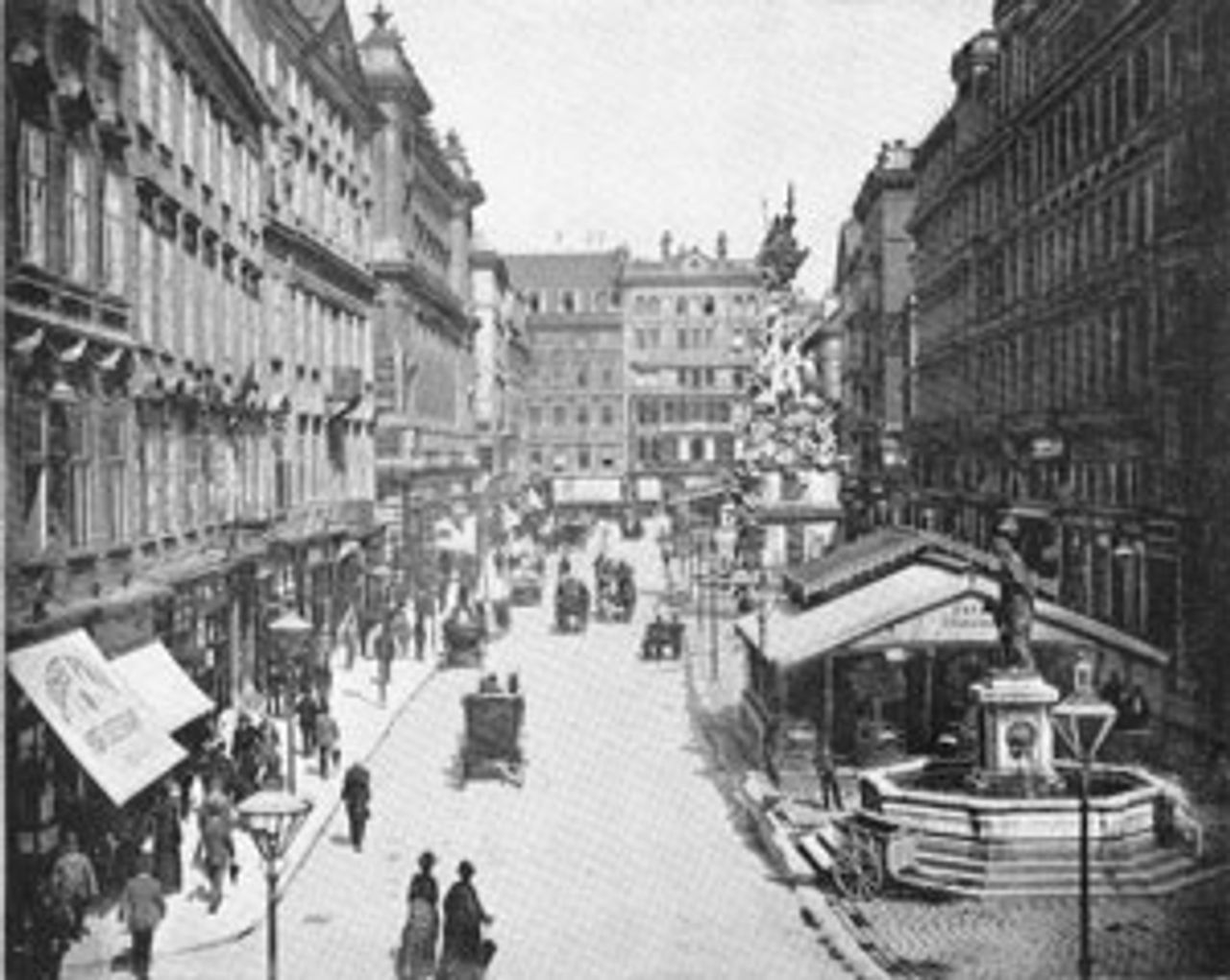 Vienna
ViennaThe second period spans 1901-1907, the prime of Mahler’s career as a conductor in Vienna, and includes his fifth through eighth symphonies, which coincided with his Rückert Lieder and Kindertotenlieder, both based on the work of the German Romantic poet Friedrich Rückert.
Last is the period from 1908 until Mahler’s death in 1911, during which he wrote his last and largest song cycle, Das Lied von der Erde, and his Ninth Symphony, and also began writing his tenth.
The “Wunderhorn” songs were composed between 1898 and 1901. Des Knaben Wunderhorn, the source of their text, was a collection of German folk poetry compiled by Clemens Brentano and Achim von Arnim at the beginning of the 19th century. Mahler’s songs, like the poems themselves, are by turns pungently comic, poignantly tragic and bitingly ironic. The symphonies Mahler wrote alongside these songs very much share their folk inspiration. Marches, dances and folk melodies are a presence in each.
Mahler’s First Symphony, predating Des Knaben Wunderhorn by some years and initially subtitled “Titan” after a novel by Jean-Paul Richter, was, according to the composer, inspired by his early life and youthful loves. It is perhaps most famous for its third movement, which develops a minor version of the popular round “Bruder Martin,” or “Frère Jacques,” and took its inspiration from an 1850 woodcut by Moritz von Schwind depicting a band of forest animals bearing a casket containing a hunter. The outer movements, though cast in a more typically symphonic mold, contain extreme contrasts and instrumental dramatization characteristic of program music or opera.
The Second, or “Resurrection” Symphony, one of three choral symphonies composed by Mahler, opens with a funeral march that was originally performed as a stand-alone tone poem and entitled “Totenfeier.” This is followed by two briefer movements, a ländler (German folk dance) and a scherzo. The fourth movement is a setting of a “Wunderhorn” text entitled Urlich (“Primal Light”), sung by a contralto. A cataclysmic closing movement with full chorus culminates with a setting of a poem by Friedrich Gottlieb Klopstock, entitled Die Auferstehung (“Resurrection”). The Second Symphony traces the theme of intense suffering, alienation, death and the possibility of rebirth, which would preoccupy Mahler through the remainder of his composing career.
In his focus on personal suffering, however, Mahler did not ignore the fate of humanity. As Bruno Walter, the famous conductor and disciple of Mahler, put it, from his Second Symphony onward, Mahler “shifted his gaze to the tragic existence of man.” It is fair to say that Mahler’s music, in its premonitions of crisis and upheaval, anticipated, in the broadest sense, the intractable crisis of world capitalism that exploded in 1914 in the First World War.
Mahler’s “gaze,” however, saw the world through a lens tinted by a variety of Christian mysticism, along with the writings of irrationalist idealist philosophers such as Nietzsche and Schopenhauer, and the literature of German Romanticism. This finds expression perhaps in an over-intoxicated sentimentalism that puts off some listeners, but Mahler’s music also expresses a broader artistic vision, a more humanistic one, and reflects as well the rigorous demands he placed on himself as a creative artist.
In this connection it is worthwhile noting the naturalistic element in Mahler’s compositions, which incorporated the sounds of nature and the outside world to an extent classical music had never seen before. His Third Symphony, which seeks to portray the cosmos rung by rung up the ladder of evolution, has passages in its first three movements where cataclysmic primordial explosions, flowers dancing in the wind and animals romping through the forest are indelibly portrayed. In an extraordinary example of the way in which the sounds of the world stimulated his musical imagination, Mahler exclaimed to a friend on a walk during which they heard in the distance the intermingled sounds of military marches and fairground noises: “Do you hear that? That is polyphony and that is where I got it from!”
The symphonies and songs, though containing great extremes of emotion and many fresh and vibrant effects, are far from chaotic collages of noise. Every one of Mahler’s compositions is regulated by a sense of form that insists on a logical development of themes, often on a massive scale.
Twentieth century symphonic composers all owed a debt to Mahler, whether they acknowledged him as a forerunner or not. Among the great symphonic composers who followed him were Sergei Prokofiev, Darius Milhaud, Heitor Villa-Lobos, Sibelius and Carl Nielsen. Perhaps the greatest was Dmitri Shostakovich, who was certainly Mahler’s most direct and worthiest musical descendant.
Shostakovich stood on Mahler’s shoulders not only with respect to form, but also in the spirit of his symphonies. Among Shostakovich’s 15 symphonies were a number that explicitly and directly portrayed epic struggles of the 20th century, including the 1905 and 1917 Revolutions and the siege of Leningrad during the Second World War. Shostakovich readily acknowledged Mahler as one of his chief influences.
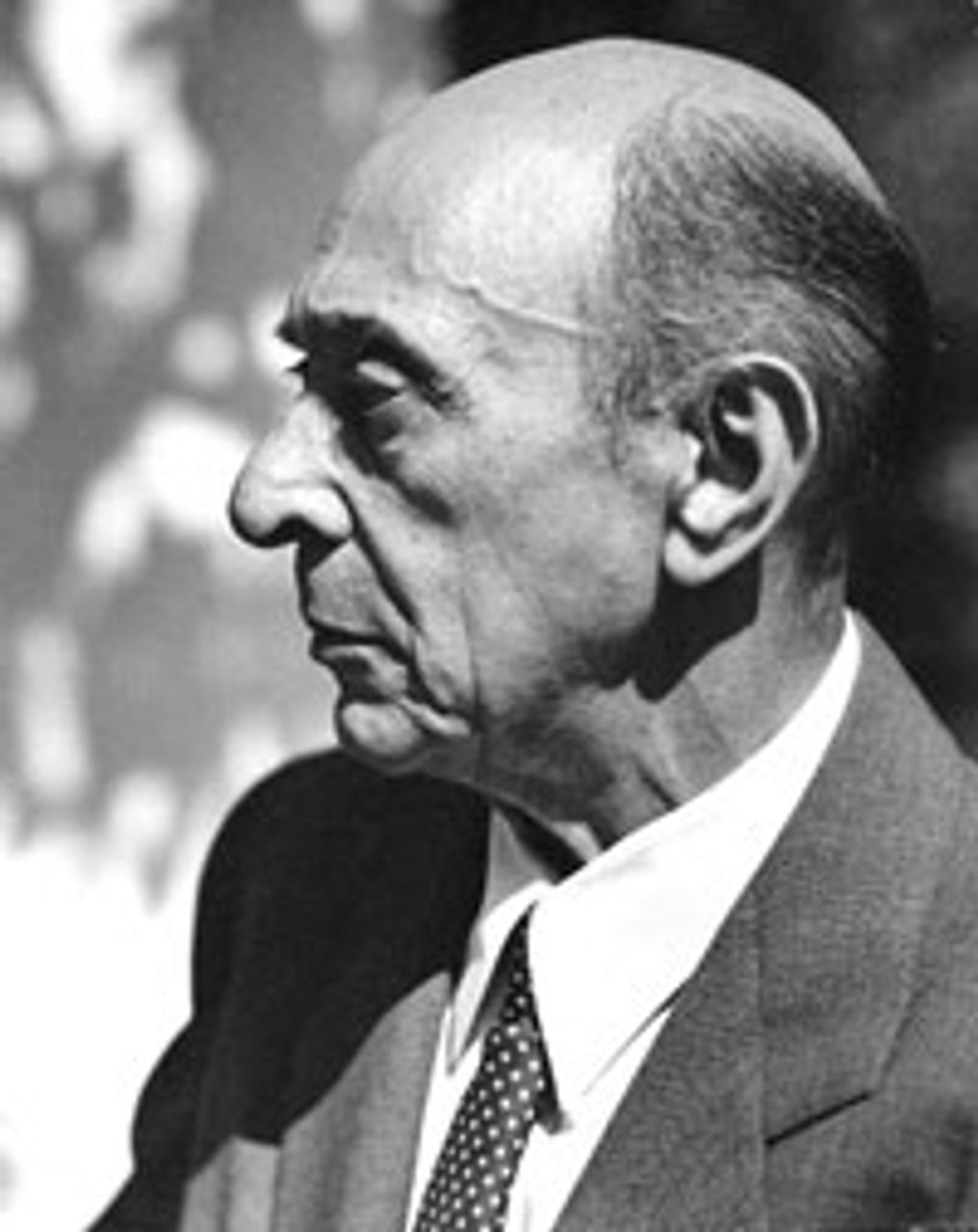 Arnold Schoenberg
Arnold SchoenbergMahler is also credited with influencing Schoenberg, Webern and Berg, the chief figures of the Second Viennese School, which originated the atonal style of composition and, somewhat later, serial, or twelve-tone music. All three of these composers, between 15 and 25 years Mahler’s junior, wrote youthful works that were somewhat close to the latter’s in style, but also possessed traits—non-tonal structures and increasingly pervasive dissonance—that indicated they were headed in a direction quite distinct from Mahler’s.
Mahler’s attitude toward Schoenberg and his music was far from antagonistic. He defended Schoenberg’s efforts at a performance that was interrupted by hecklers and in which the opposing sides nearly came to blows. Nevertheless, the assertion by Berg and others that Mahler, had he lived past 1911, would have embraced atonality or perhaps even serialism, must be regarded with a certain skepticism. It is at least equally likely that, like Richard Strauss, who lived until 1949, Mahler would have continued to write in a lyrical style that, while going beyond the tonality that characterized the 17th, 18th and 19th centuries, held fast to the same basic harmonic moorings consolidated during the period of the Enlightenment.
The innovations of the musical avant-garde in the first decades of the 20th century had something of a dual character. There was much that was fresh and invigorating in the works not only of Schoenberg, Webern and Berg, but also the impressionists Claude Debussy and Maurice Ravel; the foremost members of the group known as “Les Six,” Francis Poulenc, Arthur Honegger and Darius Milhaud; others who did not readily fit into a defined category, such as Igor Stravinsky, Béla Bartók, Prokofiev, Erik Satie and Villa-Lobos; and more experimental figures such as Charles Ives, Edgar Varèse and George Antheil. The mention of these names evokes the enormous flowering of artistic experimentation during this period. The avant-garde trends reflected the social ferment of the time and in many cases consciously associated themselves with the struggles against the war, autocracy and inequality.
Somewhat later, Schoenberg and others systematically and uncritically embraced atonality. The work of the post-Second World War avant-garde, in many cases turning away from any effort to write for a large audience, reflected, indirectly, the degree to which artists and intellectuals were thrown into despair by the horrors of the Holocaust, as well as the crimes of Stalinism. It must be said that Mahler, in an earlier period, while he certainly did not shy away from the discordant, the ugly or the tragic, interwove these elements with what he clearly believed to be the more fundamental beauty of the world and the possibilities for humanity.
There is a reason that Mahler’s music continues to find a broader audience than that of many of the more experimental generations that followed. It has less to do with the “uneducated” public, which allegedly does not possess the special acumen supposedly required for appreciating modern music, than with the problems of the academic music that has been composed in more recent decades.
Mahler’s music went from being broadly condemned or ignored during his lifetime, to a period when it was championed by a relatively small circle of composers and conductors, to a revival over the last half century that has not flagged to this day.
American conductor and composer Leonard Bernstein, whose life and career as both composer and conductor bear some comparison with that of his great predecessor, played a major role in this revival. Bernstein’s recordings of the complete Mahler symphonies were the first, and other conductors and major orchestras have followed. Mahler’s symphonies and song cycles have become staples of the repertoire.
Mahler’s music speaks in a fundamental way to the monumental and often tragic experiences through which humanity has passed in the course of the 20th century. Whether each listener, or even most listeners, is consciously aware of this connection or not, it undoubtedly exists. Mahler’s music shares with that of Shostakovich the ability to tap deep emotional responses bound up with major social and historical experiences.
The generation of listeners who rediscovered Mahler in the 1960s and 1970s were part of a period of renewed social struggles. Those who listen to Mahler today do so in a period which, in a political sense, more and more recalls the period in which Mahler himself composed. The unresolved questions of the 20th century—the dangers of war and dictatorship, the contradictions of an outmoded social order—are once again coming to the fore.
A new era of social upheaval will inject new life into the arts and pose new challenges to artists. The artist who wishes to rise to these challenges, and the worker, student and intellectual impelled to understand more profoundly the cultural framework in which they arise, or who simply wishes to experience deeply emotional and expressive music, would do well to listen to the works of Gustav Mahler.
